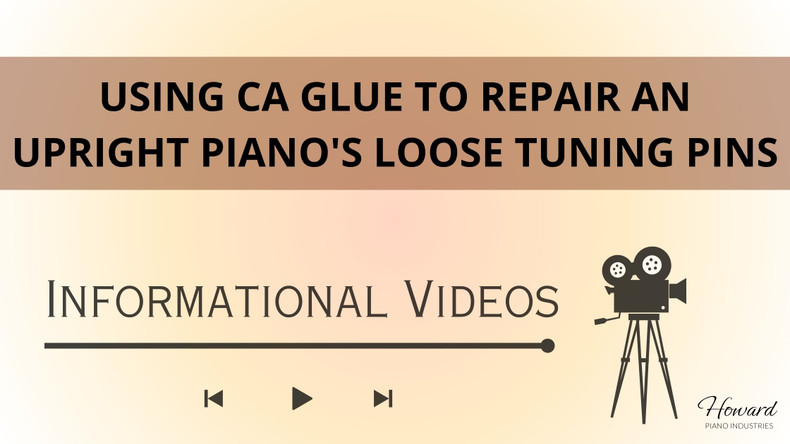Using CA Glue to Repair Loose Tuning Pins in an Upright Piano (Piano Tuning and Repair)
Welcome to our Series on Piano Tuning and Repair.
In this video we show a piano we came across that had one very loose tuning pin. We show how to apply the CA glue to the pin in an upright piano without laying the piano on its back.
If you want to see more of our Piano Tuning and Repair Series, click here to access the entire playlist.
Video Transcript:
Introduction
Here we have an old Waltham piano made in Milwaukee, Wisconsin, not too far from here. It's an older upright piano that's in kind of rough shape but the thing we came across today, was a tuning pin that was too loose, that we're going to show you how to actually repair, using CA glue. We got the D#, that's middle D#, that's got the middle string that isn't just as you can hear, is way off pitch from the other, outside two strings and when I go to turn the tuning hammer it won't hold for any period of time at all. If I just even bump it a little bit, it just goes back down and goes back down in pitch. So I can see that that's really loose, so we're going to repair that using the CA glue today.
CA Glue Introduction
I've got here, some 3/4 ounce pocket CA glue, of the super thin variety. I'll put the extender tip on it so that I can get right at the top of the tuning pin.
CA Glue Application
So, what I'm going to do here is, it's a good idea, generally, if you can, to lay the piano on its back, but since it's just one pin, I sometimes I'll do it with the piano in the upright position. What I'm going to do is, I go to the top of the pin, and put the extender tip right at the base, where the tuning pin would, tuning pin bushing is, and I'm going to apply a little bit of glue there. We got it without the glue dripping down the plate, which is a good thing.
If we just do a couple drops at a time, it goes in there as we can see, that goes into that hole just a little bit at a time, and then it'll, we'll give it a little bit of time for that glue to set well. Usually what I'll do is locate the problem right at the beginning and then go through, and either tune the rest of the strings to one section and then go back to it, because usually after about 20 minutes or so it's certainly set up and can tuned by that time.
Now, we'll come back to it after a little bit of time and can see that that's holding and even if I bump it a little bit it doesn't go a little bit out of tune, but that's holding much better than it did. So, after probably, a little bit of time, if I give it a another 15 or 20 minutes, I'll finished tuning the piano first and should come off fairly well.




